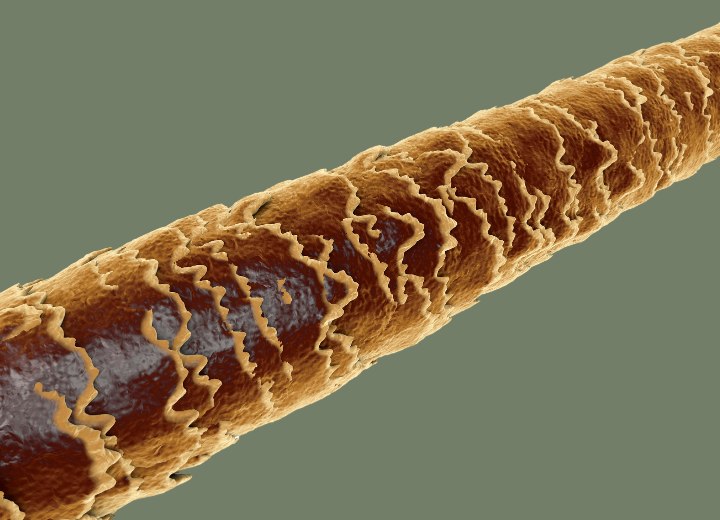The Shapes of Hair

That's how I started to notice them. I pulled one out one day and I looked at it. It is flat like tape. Isn't hair supposed to be round?
A: Actually, the hairs on your head can be a variety of shapes. Microscopic inspections have shown that the hair can be round, oval, flat, and even triangular, as well as many variations of these shapes.
• Straight hair tends to be round in shape.
• Wavy hair tends to be oval.
• Very curly hair and kinky hair are very oval (wider than thick, even flat-appearing) and can vary in shape and thickness along the length.
Of course, many people don't realize that each individual hair follicle can produce a totally different type of hair than those around it. The follicles act independently of one another. This is why it's hard to create a natural-looking hair color through artificial means. When each follicle can create a slightly different shade of color, the overall appearance is markedly more luminous and dimensional than any artificial color systems can produce.
This independence of the follicles is also what makes the hair change gradually as we age. If all follicles acted in unison, then when the hair started to go gray, you'd suddenly be completely white haired. And if you were going to go bald, you would suddenly be hairless.
Besides, since we know that hair grows in stages, with growth, resting and shedding phases, imagine having to go through a point every few years where all of your hair suddenly falls out and you have to begin growing it again from the scalp out.
In that respect, the fact that the follicles operate independently is a good thing. It allows us to adjust to the gradual changes and allows us to be able to identify potential problems that may be causing things like hair loss before the damage is too pronounced.
©Hairfinder.com
See also:
Analyzing your hair
I have a very rare genetic hair type and each follicle is banded.
I have just noticed I have one single hair strand that is very different from all the rest.
I have several strands of hair that are abnormally wavy. Why?
